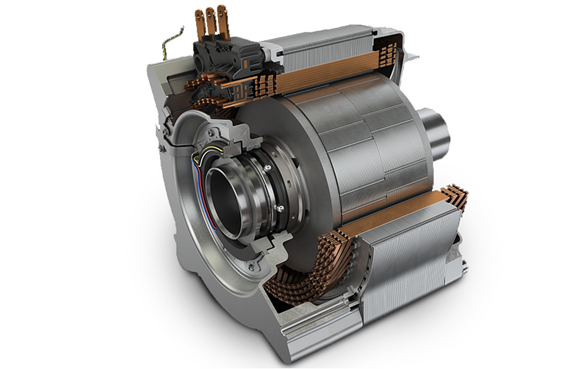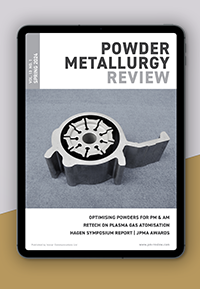REASSERT project to develop strategies for remanufacturing and recycling electric motors
January 17, 2024

To address problems that arise at the end of an electric motor’s life, researchers from the Fraunhofer Institute for Manufacturing Engineering and Automation IPA, located in Stuttgart, Germany, and industry partners are working together on the REASSERT project. This project aims to explore various concepts, including repairing, remanufacturing, and reusing electric motors, as well as developing new designs that fit within the principles of a circular economy.
As electric use increases in popularity, the number of electric motors also increases; however, when electric motors reach the end of their useful life, they are often shredded and recycled as their individual components and assemblies cannot be reused. Unfortunately, there are currently no sustainable strategies for retaining value in the form of remanufacturing and recycling electric motors within a modern circular economy.
The electrification of the automotive powertrain is continuously progressing. The electric motors used often contain valuable raw materials such as copper and rare earth metals like neodymium. Hence, it has become increasingly important to extend the usage phase of these motors. Moreover, the raw materials used in these motors have a larger carbon footprint than combustion engines.
“Innovative value retention strategies offer significant potential for emission reduction in terms of sustainability,” stated Julian Grosse Erdmann, scientist at the Fraunhofer Institute for Manufacturing Engineering and Automation IPA in Bayreuth.
As part of the REASSERT project, a team of researchers are working in collaboration with Schaeffler (the consortium leader), the Karlsruhe Institute of Technology, BRIGHT Testing GmbH, iFAKT GmbH, and Riebesam GmbH & Co. KG to develop innovative methods for remanufacturing electric motors and reusing them in vehicles. They focus on the value retention strategies of reuse, repair, remanufacture and raw material recycling. These are key elements for a circular economy, enabling the reduction of natural resource consumption and minimisation of waste. The project is funded by the German Federal Ministry for Economic Affairs and Climate Action (BMWK).
Reducing environmental impact
At present, recycling of raw materials is the established value retention strategy. Copper and aluminium in particular are recovered by manual or automated recycling methods. Electric traction motors are disassembled, shredded, sorted into individual material fractions, and melted down for this purpose. However, the recycled material, which is often contaminated, can no longer be used for motor applications, and individual components and assemblies are destroyed. Therefore, raw material recycling should only be chosen as a last resort and replaced by high-quality value preservation strategies such as reuse, repair, remanufacturing, and material recycling.
“We want to establish a closed-loop system in which valuable resources are reused in order to eliminate dependency on raw material imports and to minimise raw material extraction,” explained Grosse Erdmann.
The project partners define reuse as reusing the entire engine for secondary use and repair as the replacement of defective components and assemblies. In ‘remanufacturing,’ all components are disassembled, cleaned, reconditioned, and reassembled.
“With these strategies, fewer raw materials like rare earths, copper, and others are needed, perhaps only for spare parts,” Grosse Erdmann elaborated.
The project partners aim to recycle raw materials from motors by disassembling them and sorting the individual materials before shredding. They are analysing and selecting value retention strategies for a given application using reference motors from the passenger car sector.
Building a process chain from inbound inspection to end-of-line testing
The project involves establishing a complete process. Each step of the process is designed for different purposes, starting with the inbound inspection of the motor for classification, followed by disassembly, demagnetisation, cleaning, component diagnosis, and remanufacturing. The process ends with the reassembly of the motor and its assessment for functionality at the end-of-line testing phase.
“For instance, during this process, a motor housing with minor wear might be classified for reuse and, if necessary, reconditioned using machining processes to ensure functionality. Depending on the chosen value preservation strategy, different process steps and chains are involved, so the effort for reconditioning may vary,” explained Grosse Erdmann.
An example of a challenge would be the disassembly and reuse of magnetic materials from motors.
“A rotor with permanent magnets is difficult to disassemble into its components even in a manual disassembly process due to the coating and bonding of the magnets. Here, the goal is to establish non-destructive disassembly methods,” Grosse Erdmann added.
AI decision-making tool helps with the selection of a value retention strategy
As part of the project, an AI tool has been developed to assist in selecting the most suitable strategy for retaining the value of a given application. The tool has access to the product and process data for the electric motor, which are stored in a digital twin.
The knowledge gathered in the project is intended to be used for the design of new electric motors. The goal is to develop a prototype motor for the circular economy that can be easily disassembled and onto which the four mentioned value preservation strategies can be effortlessly applied.
Download PM Review magazine















